The Barbie dolls and Dreamhouses featured in Barbie: The Exhibition at London’s Design Museum reflect shifts in visual culture over the famed toy’s 65 years.
With over 250 objects on display, Barbie: The Exhibition opens today and examines the history of the doll since it was created by Mattel co-founder Ruth Handler in 1959.
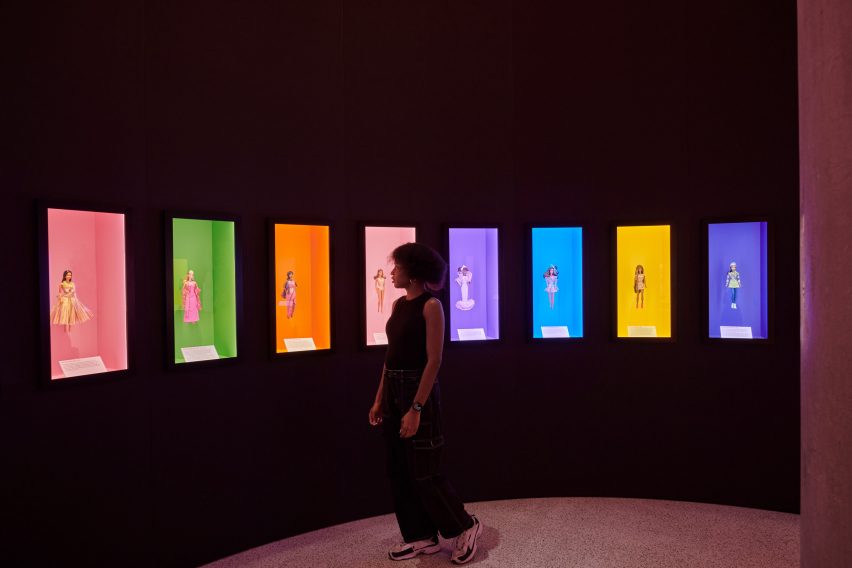
According to curator Thom, the exhibition was conceived to unpack the toy’s design influence over the last 65 years and explore the “myriad technical, aesthetic and cultural decisions that go into creating Barbie”.
“What I would really like visitors to take away from the show, whether they’ve come as Barbie fans or Barbie skeptics but with an interest in design, is that there is actually a very complex and intentional set of design processes that go into creating the dolls and the accessories,” said the curator.
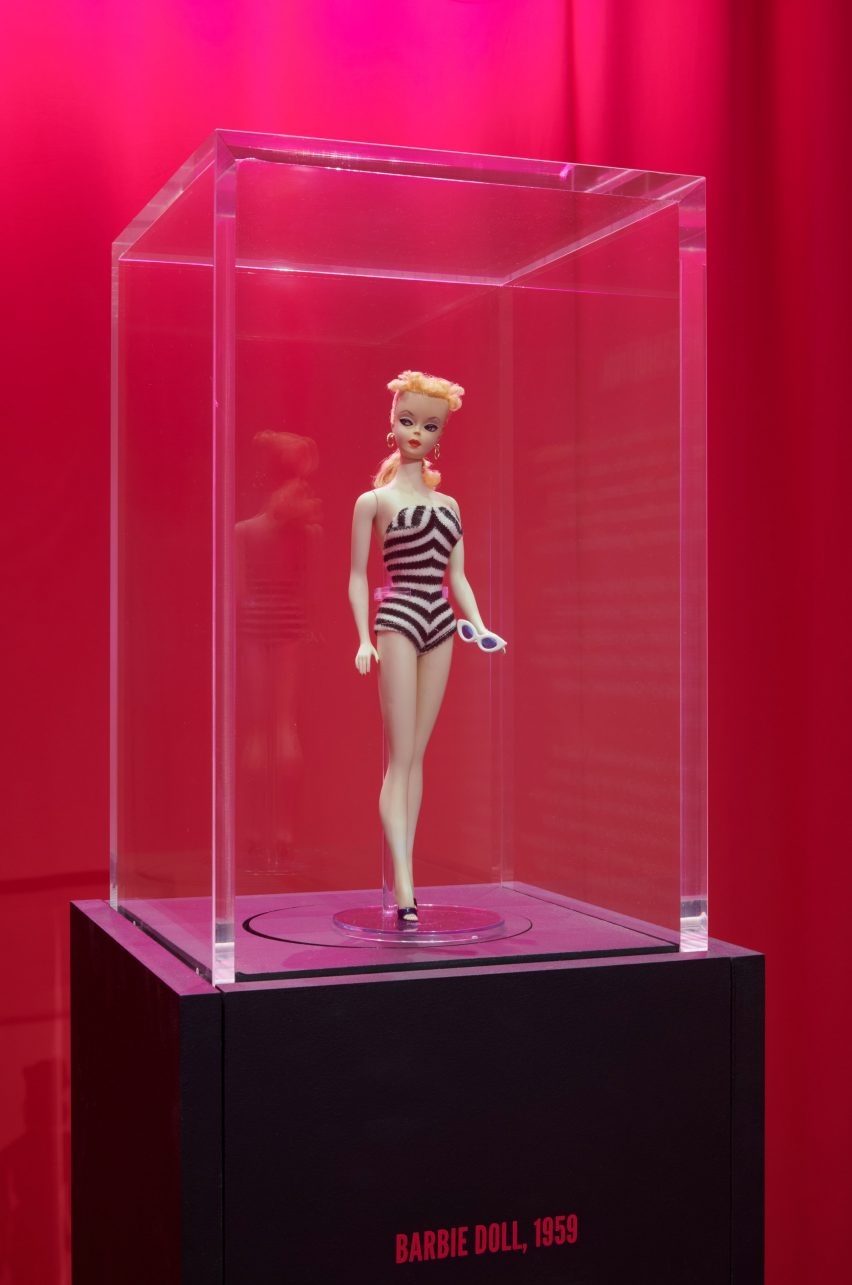
“And that intentionality does reflect the social context in which any given Barbie is being produced,” she told Dezeen at the Design Museum.
“I want people to realise that Barbie is a worthy proposition from a design point of view,” she added.
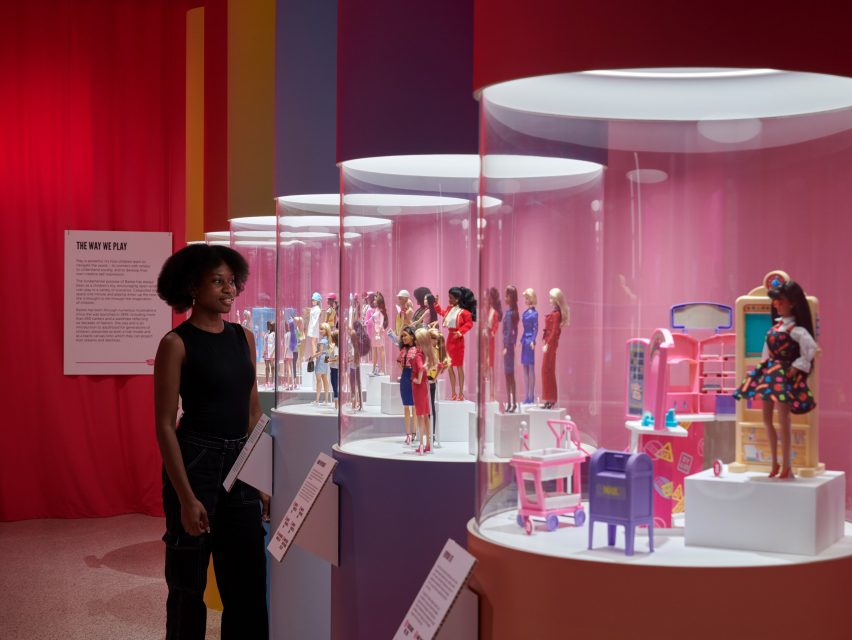
Created by architecture firm Sam Jacob Studio, the exhibition design includes iridescent colourful plinths and cylindrical toy packaging-style cases displaying past and present-day Barbies and their accompanying Dreamhouses and accessories.
Among the collection is a first-edition, hand-painted doll from 1959, positioned next to archival footage of the earliest Barbies being manufactured in Japan. The exhibition also features Christie, the first Black Barbie designed in 1968, and the first Hispanic and Asian Barbie dolls created by Mattel.
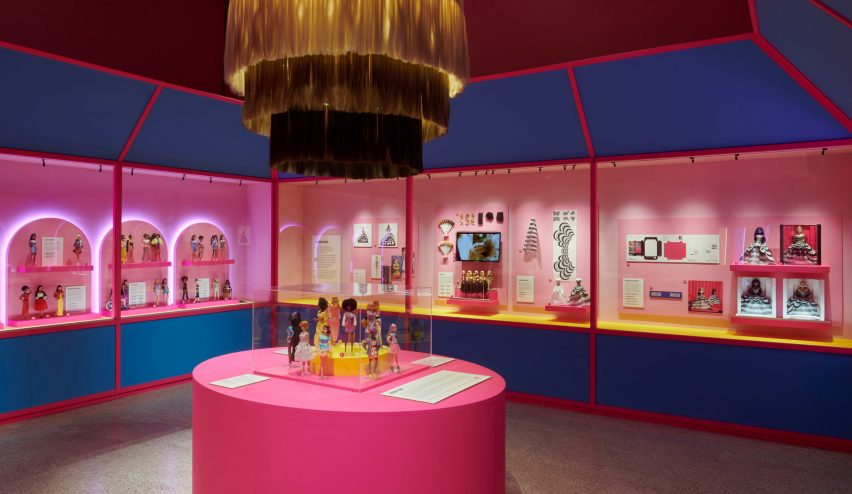
There is a specific section dedicated to the evolution of Barbie’s now 76 hairstyles available in 94 colours, crowned by a bespoke chandelier made of dolls’ hair.
“In the 90s, I found that a lot of the Black Barbies had straightened hair,” said Thom. “Today, Barbies come with different hair textures.”
“Obviously, hair play is fun. Children like to brush Barbie’s hair. But there’s more to it than that. How Barbie’s hair is represented is a way in which the importance of her is conveyed to children,” she added.
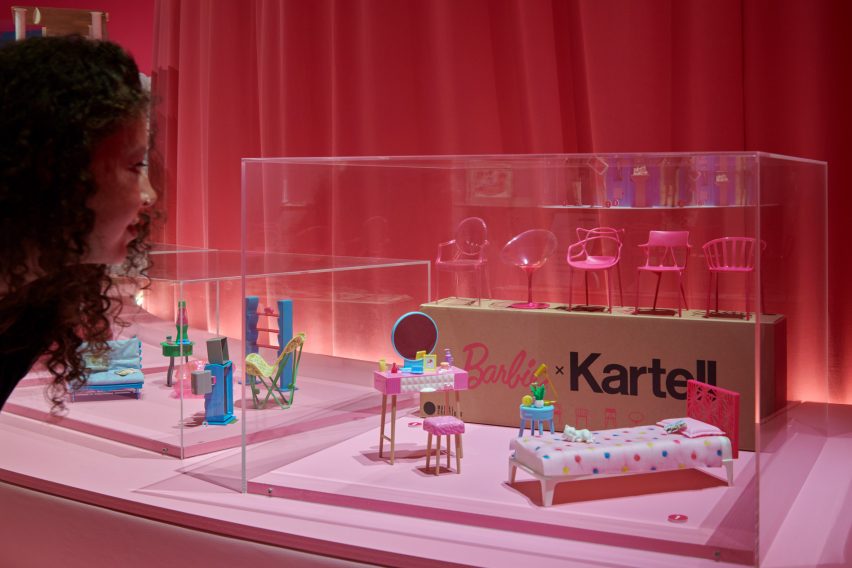
Barbie dolls from the 2016 Fashionista line are also on display, which were created to include more body types and skin types. Launched last year, the first Barbie doll with Down’s syndrome also features in the show.
“I think since the Fashionista line redesign, there has been a much more concerted effort to provide as many different visual frames of reference as possible in the doll line so that in theory, every kid can see something of themselves,” said Thom.
“I’ve found that more recently, there’s that level of attention to cultural details,” added the curator.
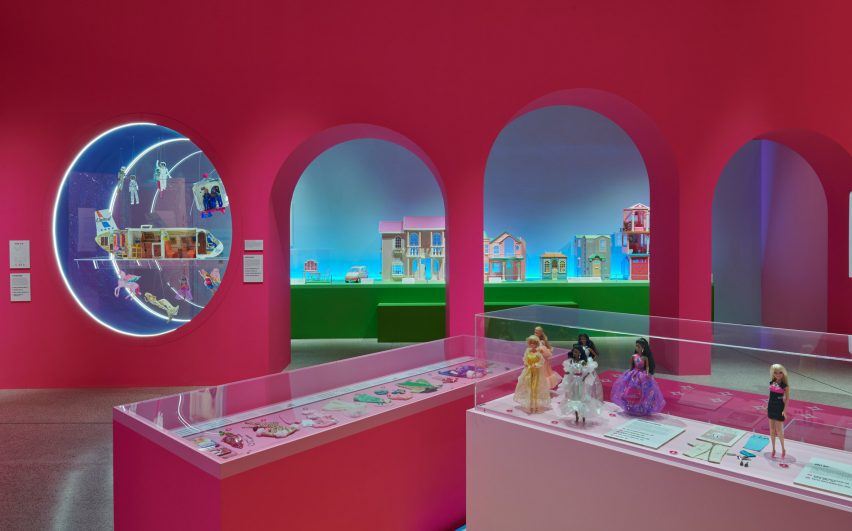
Elsewhere in the exhibition, a selection of Dreamhouses chart how architecture and furniture trends have influenced the Barbie universe.
Designed in 1962, the first Barbie Dreamhouse is on display. Created entirely out of cardboard, the single-storey home features mid-century modern furniture similar to the designs of Florence Knoll, the late pioneer of the modern open-plan office.
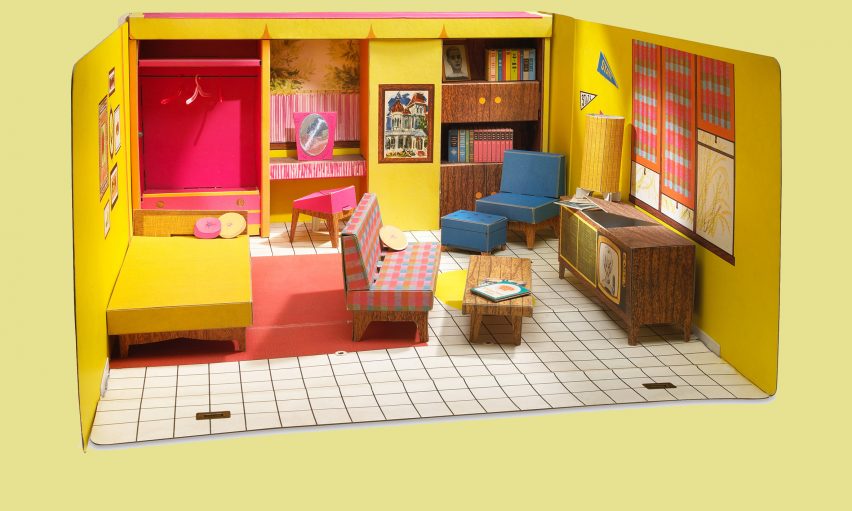
With the absence of a kitchen, the first Dreamhouse positioned Barbie as an “independent woman”, argued Thom, created at a time when it was “virtually impossible” for an American woman to gain a mortgage without a male guarantor.
Visitors can also find the yellow-hued A-frame Dreamhouse from 1978, complete with a pitched roof and angular windows, which recalls the early work of California-based architect Frank Gehry.
“It was a little avant-garde for its time,” reflected Thom. “The house doesn’t look very Barbie by our contemporary understanding of Barbie – no pink whatsoever – but these moments in Barbie’s design history reflect what was going on in the world of design,” explained the curator.
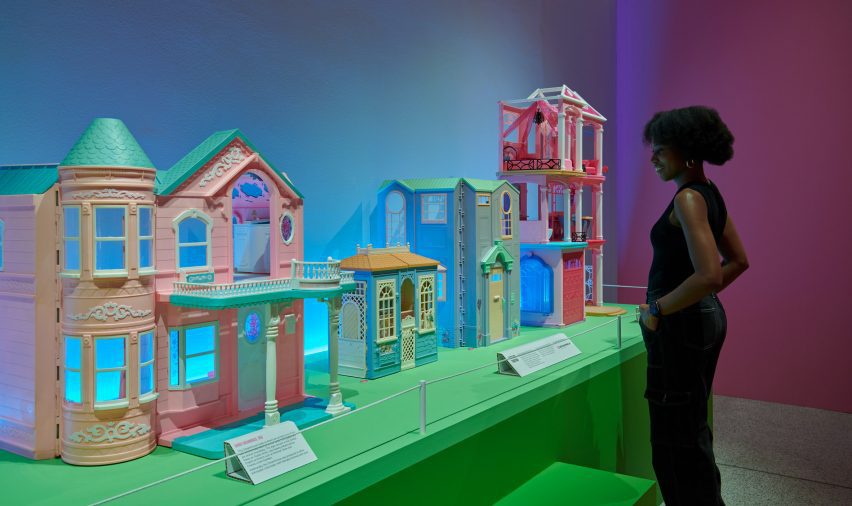
Later architecture trends also feature in the show, with a Dreamhouse from 1995 revealing a return to more traditional American 19th-century motifs including corner turrets and decorative mouldings, with all-pink, “chintzy” sofas placed in the interior.
“It’s this kind of colonial-style architecture with sash windows, a portico and vines climbing up the side,” explained Thom.
Shifts in fashion over the years are also acknowledged in the show, with various displays documenting Barbie’s many looks. There is a doll with a cropped hairstyle wearing a tiny version of a dress from the late designer Yves Saint Laurent‘s 1965 Mondrian Collection, while a host of more “everyday” Barbie garments were arranged within a bright pink cabinet.
Although Thom explained that the exhibition has been in the works for a few years, as opposed to a response to last year’s high-grossing Barbie film directed by Greta Gerwig, the show features a pair of fluffy pink mules and the multicoloured roller-skating look worn by actor Margot Robbie in the movie.
“We had a fascinating, kind of informal chat with the set designers about their process,” said the curator.
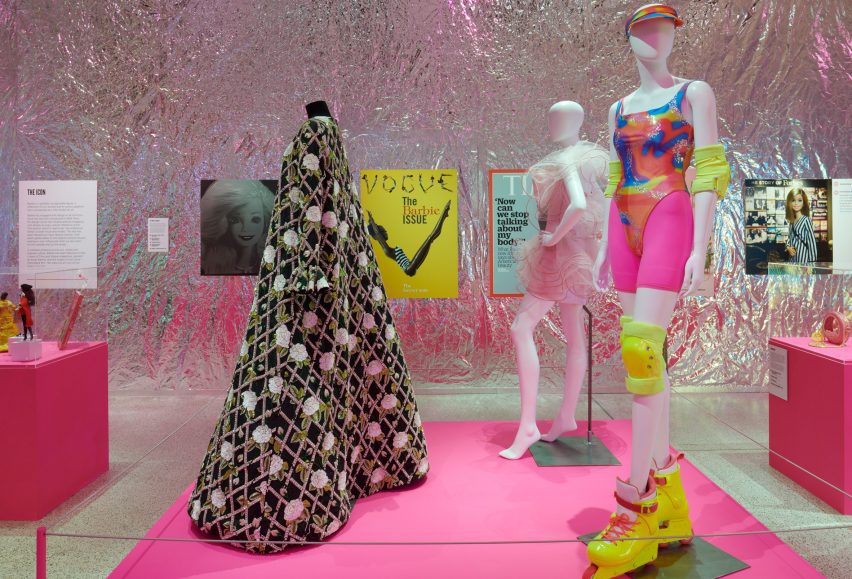
She also explained why the museum sought the exhibition design of Sam Jacob Studio.
“We wanted to work with Sam because we felt that his aesthetic, which is obviously very pop-inspired, very playful and colourful, would be a great fit for how Barbie has been presented over the years.”
“Almost all the objects in the show are tiny,” added Thom. “So we wanted to design something that gave her a sense of presence, and almost in some cases monumentality.”
“We needed to come up with a design that worked with that, but also augmented it,” she explained.
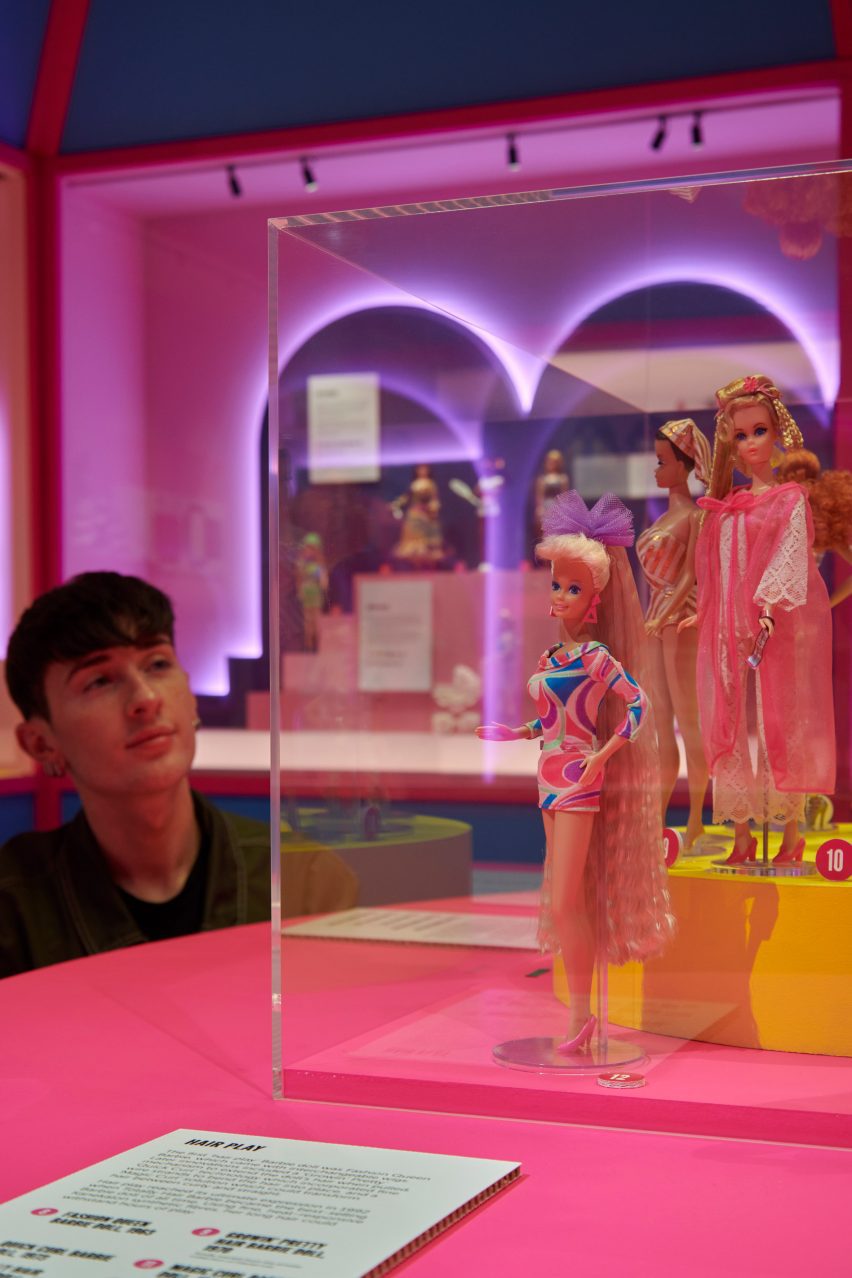
“The idea that Barbie is a reflection of culture I find interesting,” considered Thom, who noted the inclusion of various dolls in the exhibition designed with specific “careers” – Barbie has had over 250 of them in her history.
“Because it does suggest that her meaning, or meanings, are in the eye of the beholder – the eye of the consumer. And I think that’s one of the reasons for her longevity,” continued the curator.
“I think there can be a tendency to write things off that might be feminine-coded or child-orientated, as being somewhat lesser when it comes to design,” she added.
“Barbies are toys – they are mass-produced. They are designed first and foremost to be played with. But that doesn’t negate the possibility that they are important objects.”
The photography is by Jo Underhill.
Barbie: The Exhibition is on display at the Design Museum from 5 July 2024 to 23 February 2025. See Dezeen Events Guide for an up-to-date list of architecture and design events taking place around the world.
